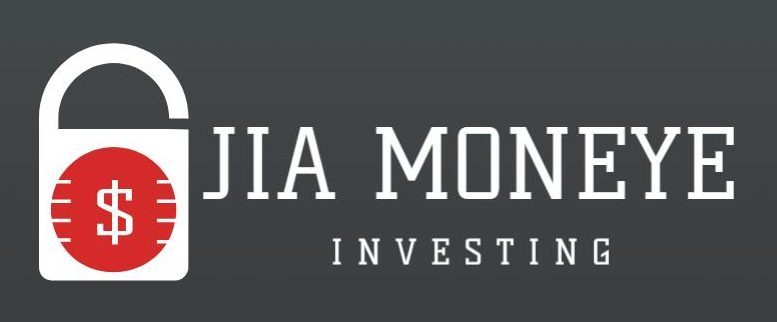
Banking for Millennials: What’s Different?
Understanding Your Financial Needs: A Guide to Choosing the Right Bank
Choosing the right bank for your needs is a crucial decision that can significantly impact your financial health and stability. It’s not just about finding a place to store your money; it’s about finding a financial partner that can help you achieve your financial goals. Whether you’re looking for a bank to handle your daily transactions, save for a rainy day, or invest for the future, understanding your financial needs is the first step in choosing the right bank.
Firstly, it’s essential to identify your banking needs. Are you a student looking for a simple checking account, or a small business owner in need of a robust suite of financial services? Do you travel frequently and need a bank with a wide ATM network, or are you more interested in online banking features? By understanding what you need from a bank, you can narrow down your options and find a bank that offers the services that are most important to you.
Next, consider the fees associated with different banks and accounts. Some banks charge monthly maintenance fees, ATM fees, and overdraft fees, among others. These fees can quickly add up and eat into your savings. Therefore, it’s important to read the fine print and understand what fees you might be subject to. Some banks offer fee-free accounts or waive fees if you meet certain criteria, such as maintaining a minimum balance or setting up direct deposit.
Interest rates are another important factor to consider. If you plan to open a savings account or take out a loan, the interest rate can significantly impact your finances. Look for a bank that offers competitive interest rates. Even a small difference in interest rates can result in significant savings over time.
Customer service is also a crucial factor. You want a bank that treats you as a valued customer and is ready to assist when you have questions or issues. Consider the bank’s customer service reputation, and think about how you prefer to interact with your bank. If you value face-to-face interaction, a bank with a local branch might be the best fit. If you prefer banking on the go, look for a bank with a user-friendly mobile app and strong online customer service.
Lastly, consider the bank’s stability and reputation. A bank with a long history and strong reputation is likely to provide a safe and secure place for your money. Look for a bank that is FDIC-insured, which means that your deposits are insured up to $250,000.
In conclusion, choosing the right bank involves understanding your financial needs and doing some research. By considering factors such as fees, interest rates, customer service, and the bank’s reputation, you can find a bank that not only meets your banking needs but also helps you achieve your financial goals. Remember, the right bank for you is one that fits your lifestyle and grows with you as your financial needs change.
The Transformation Journey: From Traditional Banking to Digital Platforms
The evolution of banking has been a fascinating journey, marked by significant milestones that have transformed the way we manage our finances. From the traditional brick-and-mortar establishments to the digital platforms of today, banking has undergone a radical transformation, adapting to the changing needs and preferences of customers.
In the early days, banking was a physical affair. Customers would walk into a bank, wait in line, and interact with a teller to carry out transactions. This traditional model of banking was time-consuming and often inconvenient. However, it was the norm, and people accepted it as part of their daily lives. The advent of technology, however, brought about a paradigm shift in the banking sector.
The first significant change came with the introduction of Automated Teller Machines (ATMs). This innovation allowed customers to withdraw cash, check their account balance, and even deposit checks without having to interact with a bank teller. ATMs provided a level of convenience that was previously unheard of, and they quickly became a staple in the banking industry.
As technology continued to evolve, so did banking. The advent of the internet brought about the next big transformation – online banking. Customers could now access their bank accounts from the comfort of their homes. They could check their balance, transfer funds, and even pay bills online. This was a game-changer, as it eliminated the need to visit a bank for most transactions.
However, the transformation didn’t stop there. With the proliferation of smartphones, banking took another leap forward. Mobile banking apps became the new norm, allowing customers to carry out transactions on the go. From checking account balances to transferring funds, and even depositing checks, everything could be done with a few taps on a smartphone screen.
Today, digital banking platforms have become the preferred choice for many customers. They offer a level of convenience and flexibility that traditional banking simply cannot match. Customers can access their accounts anytime, anywhere, and carry out transactions in a matter of seconds. Moreover, digital banking platforms also offer a range of features and services that were previously unavailable, such as budgeting tools, investment options, and instant loans.
The transformation from traditional banking to digital platforms has not been without its challenges. Security concerns, technological glitches, and resistance to change are just a few of the hurdles that banks have had to overcome. However, the benefits of digital banking far outweigh the challenges. It offers a level of convenience, flexibility, and efficiency that is unmatched by traditional banking.
In conclusion, the evolution of banking from physical to digital has been a journey of constant adaptation and innovation. It has transformed the way we manage our finances, making banking more accessible, convenient, and efficient than ever before. As technology continues to evolve, we can expect to see even more changes in the banking sector. The future of banking is digital, and it’s here to stay.
Understanding the Shift: How Millennials are Changing the Banking Landscape
Banking for Millennials: What’s Different?
Understanding the Shift: How Millennials are Changing the Banking Landscape
The banking landscape is undergoing a significant transformation, largely driven by the millennial generation. Born between 1981 and 1996, millennials are now the largest living generation, and their unique financial habits and preferences are reshaping the banking industry in unprecedented ways.
Traditionally, banking was a brick-and-mortar affair. Customers would visit their local branch to deposit checks, withdraw cash, or apply for loans. However, millennials, having grown up in the digital age, are more comfortable with technology and prefer to do their banking online. They value convenience and speed, and are more likely to use mobile banking apps and online platforms than to visit a physical branch. This shift towards digital banking has prompted many banks to invest heavily in their digital infrastructure, developing user-friendly apps and secure online platforms to cater to this tech-savvy generation.
Moreover, millennials are also more likely to use alternative financial services, such as peer-to-peer lending platforms and robo-advisors. These services offer a level of convenience and personalization that traditional banks often struggle to match. For instance, robo-advisors use algorithms to create personalized investment portfolios, while peer-to-peer lending platforms connect borrowers and lenders directly, bypassing the need for a traditional bank. These innovative services are gaining popularity among millennials, who appreciate their ease of use and the control they offer over their financial lives.
In addition to their preference for digital banking and alternative financial services, millennials also have different financial priorities than previous generations. They are more focused on saving for the future and are less likely to take on debt. This is partly due to the financial crisis of 2008, which many millennials experienced during their formative years. As a result, they tend to be more cautious with their money and are more likely to seek out financial advice. This has led to a surge in demand for financial planning and advisory services, with many banks now offering these services as part of their product suite.
Furthermore, millennials value transparency and social responsibility, and they expect the same from their banks. They want to know where their money is going and how it is being used, and they are more likely to choose banks that align with their values. This has led to the rise of ethical banking, with many banks now offering products and services that support environmental sustainability and social justice.
In conclusion, the millennial generation is reshaping the banking landscape in significant ways. Their preference for digital banking, alternative financial services, and ethical banking, coupled with their unique financial priorities, are driving banks to innovate and adapt. As this generation continues to mature and accumulate wealth, their influence on the banking industry is only set to grow. Banks that are able to understand and cater to the needs and preferences of millennials will be well-positioned to thrive in this new banking landscape.


